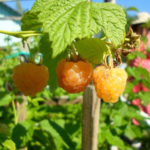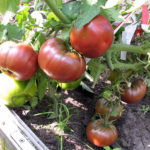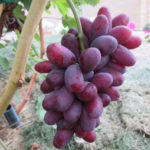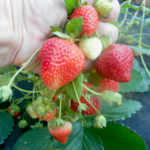Using quail manure as fertilizer
In recent years, there has been a clear tendency among gardeners and truck farmers to abandon the use of mineral fertilizers and switch to organic farming. Obviously, a complete rejection of the use of fertilizers is impossible, since in the process of growth and formation of fruits, plants actively remove nutrients from the soil, which ultimately leads to depletion of the soil. The introduction of mineral fertilizers allows you to quickly replenish the loss of nutrients, but there are pitfalls here too. Firstly, excessive use of mineral salts will inevitably lead to soil salinization. Secondly, nitrogen fertilizer mixtures can accumulate in the vegetative mass (in the form of nitrates and nitrites), as well as in plant fruits, which can lead to poisoning of humans and farm animals. In this material, an alternative method of fertilizing agricultural crops is proposed - the use of quail droppings.
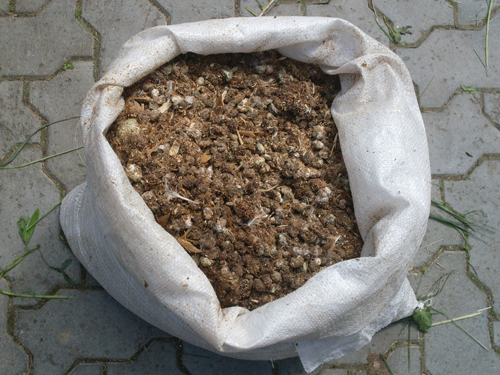
Advantages and Disadvantages of Using Quail Dung
As you know, the body of a quail is characterized by active growth, as a result of which, with a consumption of 1 kg of feed, the same amount of excrement is obtained. Large poultry farms specializing in raising these birds accumulate a huge amount of droppings that can be purchased at a reasonable price.
One of the important advantages of quail manure is a high concentration of macro- and microelements, which are contained in an easily digestible form.
Compost quail droppings are an excellent breeding ground for soil microorganisms that do a great job in improving soil fertility.
As for the disadvantages, here, perhaps, it is necessary to focus on the high concentration of uric acid, which has a toxic effect on vegetative plants. It's no secret that the use of fresh manure from any poultry is unacceptable, therefore there are several methods for preparing organic fertilizers.
Composting quail droppings
Compost is the most rational way to prepare organic waste, including quail droppings.

Composting can be carried out in metal, plastic or wooden containers, or in heaps or pits if there is a lot of organic matter. The compost preparation technology provides for layer-by-layer stacking of quail droppings and other organic matter (peat, sawdust, foliage, plant residues from the garden). Fresh droppings and plant waste are laid in layers of 20-30 cm and, if necessary, moistened. Within 30-40 days, their decomposition occurs. In the process of composting, it is recommended to shovel the mass several times to obtain a homogeneous mixture. Properly prepared compost should not emit extraneous odors (ammonia, rotten grass, etc.).
To accelerate composting, you can use cultures of effective microorganisms (EM), for example, the drug "Tamir". The agent is diluted in accordance with the instructions for use and added to the container when placing the droppings. EOs not only speed up the fermentation process of compost, but also significantly increase its quality and efficiency.
It is most advisable to prepare the compost in the fall, about a month before the intended fertilization. The ripe compost is scattered over the site, and the soil is dug up.
Recycling with worms
Dung worms are excellent assistants in the processing of various organic matter.In the process of vital activity, the worm absorbs huge amounts of soil and returns it in the form of excrement, enriched with humic acids, enzymes and beneficial microorganisms. "Worm earth" can be used for growing seedlings, making during planting, preparing liquid root and foliar dressings.
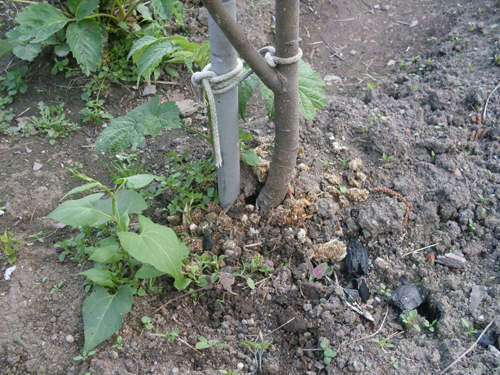
"Worm earth" is considered one of the most effective organic fertilizers, but when compared to composting, its preparation requires a little more effort. Firstly, it is unacceptable to feed the worms with fresh droppings, therefore, the compost must be prepared first. Secondly, to grow a colony of dung worms, it is necessary to prepare a "worm" - a pit, 1 to 1.5 meters deep and 1.5 meters wide (arbitrary length). Inside, the pit is sheathed with boards, filled with compost and a culture of worms is introduced. Depending on the number of individuals, compost processing can take up to 3 months. During processing, it is necessary to monitor the moisture content of the compost, as well as periodically (if necessary) introduce food for the worms.
Liquid plant food
Preparing such a top dressing is quite simple:
- Fresh quail droppings are placed in a container (for example, in a bucket) to half the volume, then filled to the top with water.
- The droppings are thoroughly mixed, and the container is closed with a lid.
- After 7-10 days, the top dressing will ferment and become usable.
It should be noted that fermented manure contains a high concentration of active substances, therefore, the liquid must be diluted before use. For watering at the root, take from 0.5 to 1 liter of the mixture to a bucket of water. For foliar treatments, 1 glass of the mixture is taken for 10 liters of water.
Liquid dressing is applied at the rate of 300-800 g per 1 square meter.
Dried quail droppings
Dried and powdered organic manure-based fertilizers are known commercially as “powders”. It is difficult to prepare "powder" at home, as this requires special equipment and microorganism cultures. "Powders" do not contain pathogenic microorganisms and weed seeds, and are also devoid of toxic substances. In order to increase efficiency, it is recommended to dilute dried quail manure with water (at the rate of 50 g per 1 m2). The introduction of "powder" for digging is also effective, although it is expensive (250 g is required for 1 m²).
Recently, you can often find granulated quail droppings on sale.
